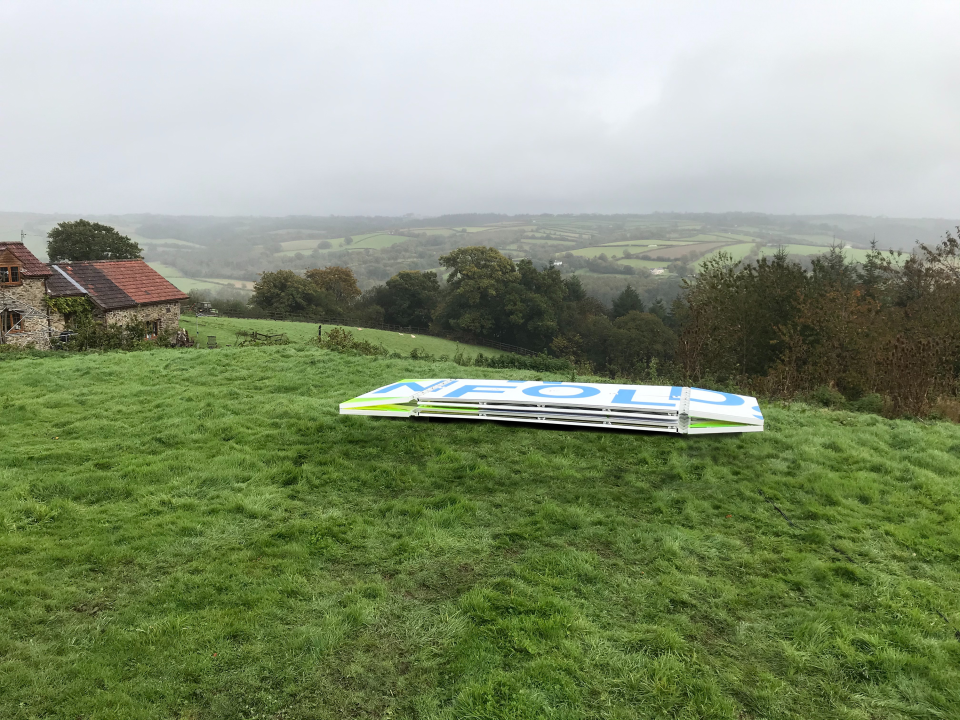How a Pair of Architects Are Remaking the Future for the Homeless
For Gisue Hariri and Mojgan Hariri, the meaning of home has always been integral to their practice as family and architects. The sisters came to the United States from Iran to study architecture at Cornell. “As Iran was getting rapidly modernized, we wanted to absorb the latest technologies that the U.S. architecture schools could offer,” says Gisue. “We did this so that we could go back to Iran and help build a more modern and progressive place.” But, after witnessing the 1979 revolution in Iran during their senior year of college, they were faced with an existential choice: Where do we make our home? “It was a huge identity crisis,” says Morgan. “Between the revolution and the hostage crisis, it was the first time we realized, Oh, people are looking at us as the other.”
In their search for home, the Hariri sisters continuously integrated their cultural construction of a home—a sacred space respectful of nature and reflecting equality—into their work. With the Hariri sisters, architecture is a philosophical medium. Long before sustainability and social justice entered the corporate mainstream, the two were using their architecture practice, Gisue underlines, as “evidence of who we are as a global community.” Their 35-year-old experimental architecture and design firm rejects the Americanized, luxury-forward, expensive real estate side of the industry and instead focuses on how to build structures grounded in accessibility.

“Creating a home is a human right—it’s the unfulfilled American dream that needs to be addressed,” Gisue shares on what inspires the team’s projects; and this has been a priority from day one. Back in 1999, Hariri & Hariri Architecture conceptualized the Digital House (exhibited at MoMA in the “Un-Private House” exhibition) in an effort to redefine contemporary family structure and provide flexible options to individuals as the scale of their units shifted. Featured in the New York Times archives, what could be construed as Steve Jobs’s next best invention was one of the firm’s original iterations of affordable housing. Now, the duo has taken what was first an urban living unit and conceptualized something that specifically caters to the transient living needs of refugees. “We live in a world of either homelessness or extravagance,” says Mojgan of the question the two confronted when imagining their latest project: the Disaster Relief Folding Pod.

According to the U.N., there are an estimated 100 million people without homes worldwide displaced by the typical culprits of inadequate government support, global warming, and war. Many of these individuals are relegated to inadequate army tents provided by refugee camps; in other words, families are living in structures where the military has played architect. Combining their history of innovative structures and an intimate relationship to the tragedy of losing one’s home, Hariri & Hariri Architecture has imagined an ecologically responsible alternative shelter that aims to offer a more humane alternative to the outdated army tents provided to the unhoused. “If we can go to Mars and walk on the moon, we should be able to eliminate homelessness,” Gisue says. And so, the Hariri sisters built their first prototype. They understood that to actually create a reasonably supportive structure for refugees, the home needed to cater to emergencies. Cue: a prefabricated origami-meets-cardboard-box-like home.

The concept prototype—a module that is easy to build, transport, and afford—is built with ALUCOBOND® PLUS materials donated by 3A Composites, but the team is also experimenting with carbon fiber. With the push of a button, the pod can inflate or collapse for families who are just arriving or in need of fleeing (“in the middle of a hurricane you don’t have time for a screwdriver, let’s be reasonable,” says Gisue). Moreover, the materials of the pod are such that any government can afford to buy it—the end goal being to implement these globally as a solution to anyone who is without a home.

The folding pod project started in 2018, and in 2020 the architect sisters were invited to participate in the Venice Architecture Biennale put on by the European Cultural Community (ECC), which was later postponed due to COVID. The first time the sisters saw their concept prototype—which was built in the U.K. by engineer Richard Perkin in a donated chicken coop—they cried. And then, when COVID hit, the race to create a full-scale prototype and gather funding became even more urgent as the two saw a need for these structures outside of hospitals. When asked what needs to be done to get there, the two reiterate funding. Recently NYCxDesign announced that their project has been selected for a “Breakout Grant” program. The urgency exists, it’s just a matter of cutting through the architectural noise. Bezos, are you listening?
Originally Appeared on Architectural Digest

